All issues

Volume 64, Issue 2
Displaying 1-6 of 6 articles from this issue
- |<
- <
- 1
- >
- >|
RESEARCH ARTICLE
-
Masahiro Kubota, Ryotaro WatanabeArticle type: RESEARCH ARTICLE
2014 Volume 64 Issue 2 Pages 37-41
Published: February 28, 2014
Released on J-STAGE: March 30, 2014
JOURNAL FREE ACCESSMachined chips of Al–Mg–Si alloys produced by turning were mechanically milled (MM) using a vibration type of ball mill, and MMed powders were consolidated into bulk materials by the spark plasma sintering (SPS) technique. Changes in hardness and solid-state reactions of the MMed powder and bulk materials have been investigated by hardness measurements and an X-ray diffraction (XRD). A high level of strain was introduced into machined chips by turning before MM process. Further strain can be introduced into machined chips by MM process. The value of hardness for obtained MMed powders and bulk materials was more than 160 HV and 250 HV, respectively. The solid-state reaction between the MMed powder and process control agent (PCA) during SPS process after MM process was observed to form Al4C3. Properties of machined chips were enhanced by strain induced through plastic deformation via turning and MM process together with solid state reaction. The combination of MM-SPS process is beneficial process for producing upgradable recycled bulk materials.View full abstractDownload PDF (2500K) -
Tetsuya Matsunaga, Eiichi SatoArticle type: RESEARCH ARTICLE
2014 Volume 64 Issue 2 Pages 42-48
Published: February 28, 2014
Released on J-STAGE: March 30, 2014
JOURNAL FREE ACCESSCreep tests were performed at less than 0.4 Tm (Tm is the melting temperature) for 99.999%, 99.57%, and 99.52% aluminum with several grain sizes in the range of 50–330 µm. These Al materials show remarkable creep behavior with an apparent activation energy (Q) of 30 kJ/mol, a stress exponent of 4, and a grain-size exponent of zero, and with a larger creep rate with increasing purity. These parameters resemble those of conventional dislocation creep, which is rate-controlled by the usual diffusion processes, except for the extra-low Q value. This means that a non-diffusional process affects the steady state deformation in this temperature region. Transmission electron microscopy revealed the development of a cell structure in the steady state and dislocations without any tangles in the cell interiors. Therefore, because the rate-controlling process could not occur inside of the cells, dislocation annihilation occurred through cross slip around the cell walls. According to these creep parameters and microstructural observations, the observed creep region is suggested to be a new creep region occurring through a non-diffusional process within the existing deformation mechanism map of Al at less than 0.4 Tm.View full abstractDownload PDF (2208K) -
Tatsuro Hayashida, Shinsuke Suzuki, Junichi Ichikawa, Ryuji ToyoyamaArticle type: RESEARCH ARTICLE
2014 Volume 64 Issue 2 Pages 49-55
Published: February 28, 2014
Released on J-STAGE: March 30, 2014
JOURNAL FREE ACCESSAligned seven pure aluminum pipes with internal diameter of 3 mm and wall thickness of 0.5 mm were dipped into Al–4 mass% Cu melt and semi-solid slurry. The specimen was cooled and solidified after holding times 0, 15 and 30 s. The pipes were bonded to the base metal with maintaining the shape of pipes by using the semi-solid base metal. An increase in solid fraction of the base metal is effective to avoid thermal damage of the pipes. Penetration of Cu into the pipe was found by EPMA analyses. Diffusion of Cu from the base metal to grain boundary of pipes decreases the liquidus temperature of α phase in the vicinity of the grain boundary of the pipes. As a result, the α phase melted partly and the pipes were bonded to the pipes with the base metal metallurgically. Porous Al–Cu alloys with aligned unidirectional pores with porosity of 26% are fabricated by this method.View full abstractDownload PDF (5889K)
REVIEW
-
Seisho Take, Yasuhiko ItoiArticle type: REVIEW
2014 Volume 64 Issue 2 Pages 58-62
Published: February 28, 2014
Released on J-STAGE: May 30, 2014
JOURNAL FREE ACCESSDownload PDF (2332K) -
Kosuke Matsubara, Ayaka Hirosawa, Kichiro KoshidaArticle type: REVIEW
2014 Volume 64 Issue 2 Pages 63-67
Published: February 28, 2014
Released on J-STAGE: May 30, 2014
JOURNAL FREE ACCESSDownload PDF (3080K)
LECTURE
-
Daisuke Shindo2014 Volume 64 Issue 2 Pages 68-74
Published: February 28, 2014
Released on J-STAGE: June 15, 2021
JOURNAL FREE ACCESSDownload PDF (5739K)
- |<
- <
- 1
- >
- >|